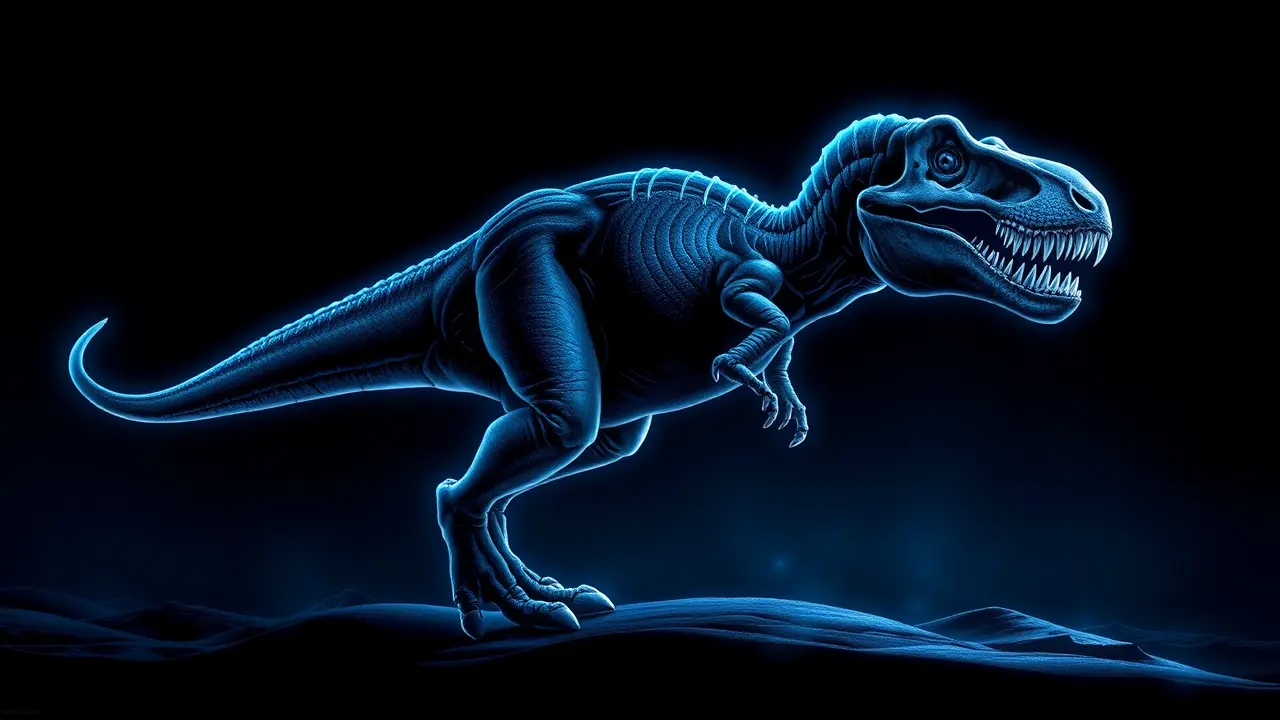
Sciencearchaeology
A prehistoric battle just rewrote T. rex’s story
TH
Thomas Green
1 day ago7 min read
The long-standing paleontological debate, a scholarly skirmish that has simmered for decades in museum halls and academic journals, has reached its definitive conclusion, and the story of Tyrannosaurus rex, the undisputed king of the Cretaceous, will never be the same. For years, a collection of smaller, more gracile tyrannosaur fossils, often found in the same Hell Creek Formation deposits as their colossal cousins, were dismissed by a significant faction of scientists as mere juvenile T.rexes—teenagers, if you will, not yet grown into their iconic robust skulls and titanic proportions. This camp argued that the anatomical differences, such as narrower snouts, longer limbs, and finer serrations on the teeth, were simply the hallmarks of youth, features that would morph and bulk up over time.The opposing view, championed by a persistent minority, held that these specimens represented a distinct species altogether: Nanotyrannus lancensis, a smaller, sleeker, and potentially faster predator that shared the late Cretaceous landscape with its more famous relative. The discovery of a single, exquisitely preserved fossil has now shattered the status quo.This isn't a fragmentary bone or an ambiguous jaw; it's a remarkably complete specimen, a 'dinosaur mummy' of sorts, with extensive bone histology analysis revealing lines of arrested growth—the biological equivalent of tree rings. These lines tell an unequivocal story: this individual was a mature adult, perhaps 15-20 years old, and it had stopped growing.It was not a T. rex in waiting; it was a fully realized Nanotyrannus.This revelation is the paleontological equivalent of discovering a cheetah was not a young lion but a completely different big cat, forcing a fundamental rewrite of the tyrannosaur family tree and the ecosystem dynamics of North America some 66 million years ago. Imagine the Hell Creek not as a kingdom ruled by a solitary, slow-moving monarch, but as a vibrant, complex savannah where multiple apex predators carved out distinct ecological niches.The T. rex, with its bone-crushing bite force and immense size, was likely an ambush predator of large, heavily-armored herbivores like Triceratops, a living battering ram.Nanotyrannus, by contrast, built for speed with its long, bird-like legs and possessing blade-like teeth ideal for slicing flesh, was probably a pursuit hunter of smaller, swifter prey like hadrosaurs, or perhaps even a pack hunter capable of taking down larger animals through coordinated effort. This discovery profoundly alters our understanding of predator diversity and competition.It suggests that the ecosystem was far more nuanced than previously modeled, with these two tyrannosaurs avoiding direct competition by essentially operating in different lanes, much like lions and leopards do today. The implications ripple outward, forcing a re-examination of countless other museum specimens labeled as 'juvenile T.rex' and opening up thrilling new avenues of research into tyrannosaur growth patterns, behavior, and eventual extinction. The throne of the Cretaceous, it turns out, was not a solitary seat but a shared dominion, and T. rex must now be understood not as a solitary titan, but as one half of a dramatic, prehistoric duality.
#featured
#Nanotyrannus
#T. rex
#dinosaur
#fossil
#paleontology
#Cretaceous
#predator
Stay Informed. Act Smarter.
Get weekly highlights, major headlines, and expert insights — then put your knowledge to work in our live prediction markets.
© 2025 Outpoll Service LTD. All rights reserved.